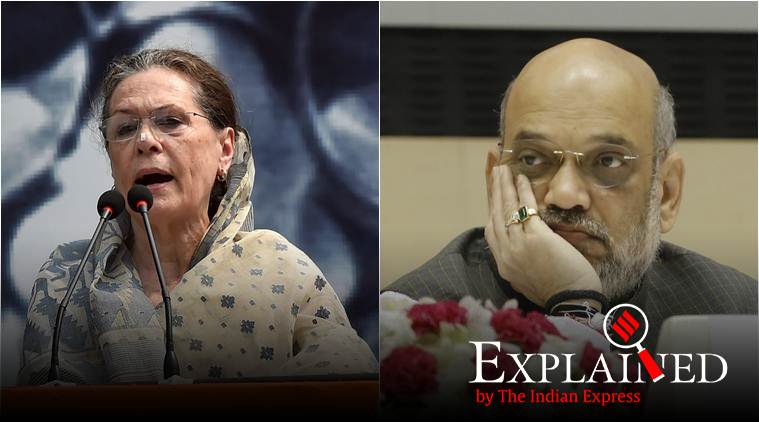Explained: What election manifestos must do, why they matter
The Congress-NCP alliance in Maharashtra release their manifesto in the beginning of the week, and the Haryana Pradesh Congress Committee published its Sankalp Patra on Friday. How do manifestos matter, and how seriously should they be taken?
 Manifestos are a formality, and their release is often no more than a photo-op in the campaign of political parties. (File)
Manifestos are a formality, and their release is often no more than a photo-op in the campaign of political parties. (File)
With Assembly elections in Haryana and Maharashtra scheduled for October 21, this is the season for political parties in the two states to release their election manifestos.
The Congress-NCP alliance in Maharashtra released their manifesto in the beginning of the week, and the Haryana Pradesh Congress Committee published its Sankalp Patra on Friday. How do manifestos matter, and how seriously should they be taken?
Mostly it is just words
In many ways, manifestos are a formality, and their release is often no more than a photo-op in the campaign of political parties. They are frequently delayed, leaving no time for voters to go through the contents in order to make informed choices.
In any case, voting patterns in most of India are dictated largely by tribal instincts and loyalties to communities, castes, or individuals, with dispassionate argument having only a limited role to play in the choices voters make.
The rate of compliance with election promises is erratic for all parties, and most are criticised for departing from their manifestos after coming to power.
This is because election manifestos are not legally enforceable documents. In 2015, a Bench of Chief Justice of India H L Dattu and Justice Amitava Roy declined to entertain a petition filed by advocate Mithilesh Kumar Pandey on this subject, saying there was no provision in law under which political parties could be held liable for not fulfilling promises made in their election manifestos.
But there are guidelines
In 2013, the Election Commission of India, acting on directions given by the Supreme Court, added guidelines on election manifestos in the Model Code of Conduct (MCC).
In S Subramaniam Balaji vs Govt. of Tamil Nadu and Others (July 2013), a Bench of Justices P Sathasivam and Ranjan Gogoi ruled that the “distribution of freebies of any kind, undoubtedly, influences all people”, and “shakes the root of free and fair elections to a large degree”.
Considering there is “no enactment that directly governs the contents of the election manifesto”, the court directed the Election Commission “to frame guidelines for the same in consultation with… political parties”. It suggested that “a separate head for guidelines for election manifesto released by a political party can also be included in the Model Code of Conduct for the Guidance of Political Parties & Candidates”.
Additions to Model Code
After the Supreme Court’s directions, the Election Commission met with recognised national and state parties for consultations, and then issued the following guidelines under Part VIII of the MCC:
(i) The election manifesto shall not contain anything repugnant to the ideals and principles enshrined in the Constitution and further that it shall be consistent with the letter and spirit of other provisions of Model Code of Conduct.
(ii) The Directive Principles of State Policy enshrined in the Constitution enjoin upon the State to frame various welfare measures for the citizens and therefore there can be no objection to the promise of such welfare measures in election manifestos. However, political parties should avoid making those promises which are likely to vitiate the purity of the election process or exert undue influence on the voters in exercising their franchise.
(iii) In the interest of transparency, level playing field and credibility of promises, it is expected that manifestos also reflect the rationale for the promises and broadly indicate the ways and means to meet the financial requirements for it. Trust of voters should be sought only on those promises which are possible to be fulfilled.”
Prohibitory period for manifestos
The guidelines also laid down the prohibitory period for the release of manifestos during elections:
(i) In case of single-phase election, manifesto shall not be released during the prohibitory period, as prescribed under Section 126 of The Representation of the People Act, 1951.
(ii) In case of multi-phase elections, manifesto shall not be released during the prohibitory periods, as prescribed under Section 126 of The Representation of the People Act, 1951, of all the phases of those elections.”
In Section 126 of the RP Act, the ‘prohibitory period’ signifies the “period of forty-eight hours ending with the hour fixed for conclusion of poll”.



- 01
- 02
- 03
- 04
- 05



































